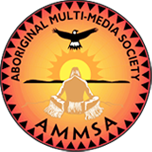Article Origin
Volume
Issue
Year
Officials behind an ambitious plan by a Canadian mining company have reached out to Aboriginal people as it gets closer to opening Saskatchewan’s first diamond mine.
Sturgeon Lake First Nation and Red Earth Cree Nation both signed deals with Shore Gold Inc. at a May 12 signing ceremony in Nipawin.
Signatories hope the agreement will prevent conflict as the Shore Gold forges ahead with plans to open a mine in the Fort à la Corne region in central Saskatchewan, approximately 60 kilometres east of Prince Albert.
Shore Gold is preparing an environmental impact statement, which is one of the last major hurdles the company must clear before its Star Diamond mine is opened. In the case of Sturgeon Lake, the proposed mine site is asserted by Sturgeon Lake to be part of its traditional territory.
The “information gathering deals” signed with both Aboriginal communities are meant to collect information to be used by both Shore Gold and the communities. It is hoped that issues such as traditional land use, environmental protection and Aboriginal history will be explored, and Shore Gold will learn more about how to proceed while keeping the mandates of Aboriginal people in mind.
As well, Sturgeon Lake First Nation and Red Earth Cree Nation will be collecting stories from elders, compiling data and opinions from local residents about the mine site and help preserve the history of the land, stories and people who have relationships with the area. Also, Aboriginal people will learn about the economic potential of the mine, as well as the large number of jobs that will likely come to the area.
Shore Gold, which has employed dozens of First Nations people and hired several Aboriginal contractors since work on the site began years ago, said it only made good economic sense to approach local Aboriginal people before any mine is built to keep friendly communication lines open.
“What we are trying to be is proactive and go to these groups and ask them ‘what sort of dialogues can there be so that this project go ahead with the least amount of impact to traditional Aboriginal activities”,” said Eric Cline, Shore Gold’s vice president of corporate affairs.
Cline said Aboriginal people have legitimate concerns when it comes to the protection of “non-human resources” like wildlife, forestry, as well as issues like hunting, trapping and fishing in the area.
Shore Gold officials approached the Aboriginal groups after they were identified by the Saskatchewan government as having various traditional claims on the area. Other Aboriginal groups that have claims to the area include the James Smith Cree Nation, Muskoday First Nation, Métis Nation Saskatchewan, Eastern Region 2 and Métis Nation Saskatchewan, Western Region 2.
“One objective of (the agreements) are to understand the impact the project may have on traditional uses or spiritual or cultural sites of importance to aboriginal people who view the forest as part of their traditional territory,” said Cline.
“We respect and appreciate aboriginal rights and the need to accurately inform government regulators about the impact Shore’s activities could have on the environment, including any impact on aboriginal uses or sites. In addition, the gathering of such information can provide ways to mitigate or eliminate any adverse impacts of the project.”
Shore Gold said that it was interested in helping both the Sturgeon Lake First Nation and Red Earth Cree Nation build a database of traditions and knowledge in hopes of recording the history of Aboriginal people on and hear the proposed mine site. Not only will it benefit the company, the exploration of history and traditional native stories but it will also help Aboriginal people in the future when it comes to passing along history to new generations.
“While much of this information gathered will be of benefit to the environmental impact statement, some of it won’t be applicable to that, but will see be of relevance to the Aboriginal people,” Cline said.
Red Earth has hired Manitoba consulting company Hobbs and Associates, which recently completed an economic development planning initiative. Project Director Steffen Knippel said local First Nations can forge new relationships with Shore Gold, and have new documents and recordings that will help protect stories and the history of Native groups.
“You have to find the economic hook to justify the exercise ... getting a sense of the history of Aboriginals in one area is one of the off-shoots of this, and that is something that is not typically funded,” said Steffen Knippel of Hobbs and Associates.
“Becoming better able to have fruitful negotiations with various commercial groups is something that we want for our clients,” Knippel said.
The land the project includes is more than 9000 hectares, and Shore Gold believes it contains massive amounts of high-quality diamond. Cline said if approvals are granted quickly, construction on a mine could begin as early as late 2011 and be operational by 2014.
- 3119 views
